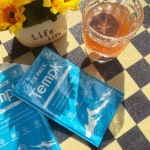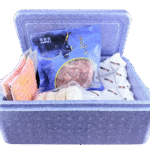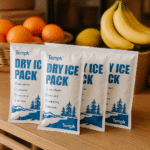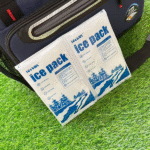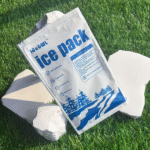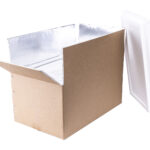Dry ice vs PCM gel packs is the single most important decision when you ship temperature-sensitive goods. Choose wrong and you risk product loss, compliance issues, and unhappy customers. Choose right and you reduce costs, minimize claims, dan dikirim dengan percaya diri. This article synthesizes and improves your previous drafts to deliver a 2025-ready guide.
-
Suhu & physics: Bagaimana dry ice vs PCM gel packs truly differ in performance and set-points
-
Keamanan & peraturan: what handlers must do, and when hazmat rules apply
-
Best-fit scenarios: makanan, farmasi, and e-grocery lane choices that actually work
-
Pack-out design: insulation first, coolant second for longer hold time
-
2025 tren: reusables, Isolasi VIP, and validation habits that win
How do temperature and physics differ?
Jawaban singkat: Dry ice vs PCM gel packs diverge on temperature and phase behavior. Es kering sits near −78.5 °C and sublimates to gas, delivering ultra-low cooling. Paket gel PCM are engineered to freeze/melt at target set-points (for example −21 °C, +5 ° C., atau +20 ° C.), giving stable temperature without gas.
Mengapa Anda harus peduli: Ultra-low is great for deep-frozen goods, but it can over-cool chilled payloads. PCMs hold a narrow band, helping you avoid cold shock and excursions. Di dalam 2025 Operasi, that stability prevents rework and cuts claims—especially in pharma and meal-kit delivery.
How do set-point PCMs avoid “over-cooling”?
During the phase change, PCMs absorb heat at a nearly constant temperature. A +5 °C PCM buffers a 2–8 °C payload near the middle of the range, while a −21 °C PCM protects frozen foods without pushing them toward −78 °C. The result is predictable thermal behavior with safer handling and easier SOPs—no CO₂ gas and no frostbite risk for the end user.
| Perbandingan | Es kering | Paket gel PCM | Arti praktis |
|---|---|---|---|
| Working temperature | ~−78,5 °C | Custom set-point (−21 °C, +5 ° C., +20 ° C.) | Match coolant to product label |
| Phase behavior | Sublimates → gas | Melts/freezes; tidak ada bensin | Venting vs. simple refreeze |
| Status Hazmat | Regulated UN 1845 | Non-hazmat | Labels/training vs. penanganan yang mudah |
| Penggunaan kembali | Sekali pakai | Dapat digunakan kembali | Lower cost per cycle |
| User safety | PPE required | Safe to touch | Lebih sedikit insiden |
Tips Praktis
-
Vaccine lanes (2–8 ° C.): Menggunakan +5 °C PCM packs, bukan 0 °C ice, to avoid cold shock.
-
Makanan beku (−30 °C to −10 °C): Use −21 °C PCM packs for short/medium routes; dry ice for ultra-low or long haul.
-
Pengiriman konsumen: Avoid hazmat steps at the doorstep—prefer PCM unless ≤−40 °C is mandatory.
Kasus nyata: A seafood shipper replaced mixed gel + dry ice with −21 °C PCMs and better insulation for 24–36 h regional lanes. Complaint rates fell, hazmat steps disappeared, and repack time dropped by one-third while maintaining temperature integrity.
When should you choose each method?
Jawaban Langsung: Gunakan es kering for ≤−40 °C or CO₂-beneficial shipments. Use PCM gel packs for −21 °C frozen, +5 °C refrigerated, atau +18/+22 °C controlled room temperature (CRT), and when you want simpler handling without hazmat paperwork.
How to decide:
-
Map product limits. If ≤−40 °C, Gunakan es kering.
-
Check restrictions. If hazmat blocks your route, pilih PCM.
-
Rencanakan untuk digunakan kembali. PCM programs cut recurring costs.
Pack-out design: insulation before coolant
Reducing heat gain matters more than adding coolant. VIP (panel terisolasi vakum) outperform thick foam, enabling smaller boxes and longer hold times. Position coolant where heat enters (atas/samping) dan meminimalkan ruang kepala.
| Pack-out factor | Apa yang harus dilakukan | Mengapa | Dampak |
|---|---|---|---|
| Box sizing | Right-size space | Less air = longer hold | Lower freight |
| Isolasi | Tambahkan VIP | Reduce heat gain | Extend duration |
| Coolant placement | Top/sides | Match heat path | Suhu stabil |
| Pengkondisian | Follow SOP | Prevent excursions | Konsistensi |
Mini “How-To”:
-
Pre-stabilize payload.
-
Condition PCM or weigh dry ice.
-
Load with minimal headspace.
-
Verify with data loggers.
Shipping safety and compliance
Es kering: Needs vented packaging, pelabelan, dan penanganan yang terlatih. Never make a dry-ice package airtight. Tandai “Es Kering/Karbon Dioksida, Padat,” with UN 1845 dan massa bersih (kg).
Paket PCM: Usually non-hazmat—just follow supplier SDS and conditioning SOP.
Esensi Keamanan:
-
Use insulated gloves and ventilation for dry ice.
-
Confirm carrier CO₂ limits.
-
For consumer boxes, use only non-hazmat PCMs.
2025 tren rantai dingin
Keberlanjutan & inovasi: Reusable PCMs and VIP insulation are standardizing in global shipping. Shippers now optimize −21 °C and +5 °C programs to eliminate hazmat steps, Kurangi limbah, and validate performance with data loggers.
Key developments
-
Pendinginan hibrida: Combining PCMs with small dry-ice loads extends duration.
-
New PCM chemistry: Higher latent heat, tighter set-points, waktu tahan yang lebih lama.
-
Budaya validasi: Summer/winter lane testing as standard practice.
Wawasan pasar: E-grocery, Biologi, and specialty foods drive rising demand for −21 °C and +5 °C PCM. Reusable packaging and closed-loop programs deliver cost and ESG gains, while dry ice remains critical for ≤−40 °C use.
FAQ
Q1: Is a PCM gel pack the same as dry ice?
TIDAK. A PCM gel pack is a reusable phase-change coolant at a specific temperature; dry ice is solid CO₂ at −78.5 °C.
Q2: When should I choose −21 °C PCMs instead of dry ice?
For frozen goods not needing ≤−40 °C, choose −21 °C PCMs for safe, non-hazmat shipping.
Q3: Bisakah saya terbang dengan es kering?
Yes—within airline and courier limits with venting and labeling. PCMs have no such restriction.
Q4: What causes most PCM shipment issues?
Improper conditioning and excess air space. Follow SOPs strictly.
Q5: Are PCMs safe for end customers?
Ya. They are sealed, tidak beracun, dan dapat digunakan kembali.
Ringkasan & Rekomendasi
Poin -poin penting: Dry ice vs PCM gel packs differ in temperature, keamanan, dan aturan. Dry ice covers ≤−40 °C lanes but adds hazmat overhead. PCMs handle −21 °C to +22 °C safely and efficiently. Optimize insulation before increasing coolant.
Langkah selanjutnya:
-
Map SKU temperature requirements.
-
Choose the lowest-hazard coolant that meets them.
-
Validate lanes by season.
CTA: Consult a Tempk cold-chain expert to optimize your set-points and packaging.
Tentang tempk
We create practical, validated cold-chain packaging—reusable PCM gel packs (−21 °C, +5 ° C., +18/+22 ° C.), Pengirim VIP, and tested SOPs for frozen, didinginkan, and CRT lanes. We focus on compliance, pertunjukan, dan efisiensi biaya.

















